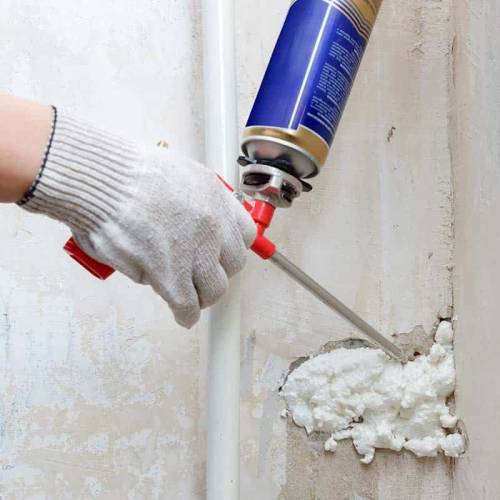Introduction
In today’s construction landscape, energy efficiency, durability, and indoor comfort are top priorities. Whether it’s a residential project, commercial complex, or industrial facility, modern builders seek materials that can deliver long-term performance while reducing environmental impact.
One material that is rising in popularity across the UAE is PU foam. Known for its insulation properties and adaptability, it provides a practical solution for energy-conscious architects, developers, and homeowners.
What is Polyurethane Foam?
Polyurethane foam is a synthetic material created by reacting polyols with isocyanates. This reaction produces a foam that can be either rigid or flexible, depending on the formulation and application. Once applied, the foam expands and solidifies, forming a durable barrier against heat, moisture, and noise.
What makes it stand out is its ability to provide high thermal resistance in a lightweight form. This allows for efficient temperature regulation in buildings, leading to improved comfort and lower utility costs.
Types of Polyurethane Foam
1. Rigid Foam
This type of foam is primarily used for thermal insulation. It’s lightweight, strong, and capable of forming continuous insulation layers on walls, roofs, and floors. Rigid variants are commonly seen in:
- Roof panels
- Wall cladding systems
- Refrigerated storage units
- HVAC insulation
It effectively limits heat transfer, which is especially beneficial in extreme climates like the UAE.
2. Flexible Foam
Flexible foam is soft and elastic, commonly used in cushioning applications such as:
- Upholstered furniture
- Mattresses
- Automotive seating
- Acoustic wall treatments
Its flexibility and ability to absorb pressure make it a staple in interior and industrial design.

Why Builders Prefer Polyurethane Foam
Superior Insulation
The high insulation value of polyurethane foam helps in maintaining stable indoor temperatures.
Moisture Barrier
Its closed-cell structure resists water absorption, helping prevent dampness, mold, and rot. In coastal or humid regions, this is particularly advantageous for protecting structural integrity.
Air Sealing
When applied as spray foam, it expands into cavities and gaps, creating an airtight seal. This not only improves indoor air quality but also prevents drafts, dust, and pollutants from entering.
Durability and Longevity
Once installed, it maintains its shape and function for many years with minimal maintenance. It doesn’t sag or degrade easily, making it a cost-effective, long-term solution.
Applications in UAE Construction
The harsh climate of the UAE demands materials that can withstand high temperatures and occasional sandstorms. Polyurethane foam meets this requirement across a variety of use cases:
- Roof Insulation: Helps reduce solar heat gain in homes and warehouses.
- Wall Panels: Offers effective internal and external insulation.
- Cold Storage: Maintains low temperatures and prevents condensation.
- Pipelines and Ducts: Reduce heat loss in industrial settings.
- Window and Door Seals: Block air leaks and enhance energy efficiency.
Its versatility and performance under extreme weather conditions make it a favorite among contractors in Dubai, Abu Dhabi, and Sharjah.
Environmental Benefits
Although it’s a synthetic product, polyurethane foam supports eco-conscious construction in several ways:
- Energy Savings: By reducing reliance on HVAC systems, it cuts down on fossil fuel consumption.
- Reduced Carbon Emissions: Lower energy use means fewer greenhouse gas emissions.
- Less Material Waste: Its durability reduces the need for frequent replacements or repairs.
Innovations are also leading to formulations with lower emissions and eco-friendly blowing agents, making it more sustainable over time.
Cost vs. Long-Term Value
While the upfront cost of polyurethane foam may be higher than other insulation types, the long-term benefits far outweigh the initial investment. Here’s why:
- Lower energy bills over time
- Fewer maintenance requirements
- Increased property value
- Better indoor air quality
In commercial settings, the ROI is even faster due to the scale of energy savings.
Fire Safety and Compliance
Fire safety is a major concern in building materials. Modern polyurethane foam products are manufactured with fire-retardant additives and comply with international fire safety standards. Always ensure your supplier provides certified products tested for flammability and smoke emissions.
PU Foam in Future-Ready Construction
As smart building technologies and green construction practices evolve, materials like PU foam are becoming central to futuristic designs. Whether integrated into prefabricated panels or combined with renewable energy systems, it supports a vision of more efficient and sustainable architecture.
With urban growth on the rise in the UAE, particularly in Dubai and Abu Dhabi, materials that deliver performance, efficiency, and sustainability are in high demand—and this foam is leading the charge.
Conclusion
When it comes to insulation, not all materials offer the same level of performance. Polyurethane foam stands out as a smart, effective, and durable solution tailored for modern construction demands. From energy savings to indoor comfort and environmental impact, the benefits are clear.
If you're planning a project and looking for ways to increase efficiency and reduce long-term costs, PU foam may be the right choice. Its performance in extreme climates like the UAE has already proven successful across a wide range of applications.


Add Comment